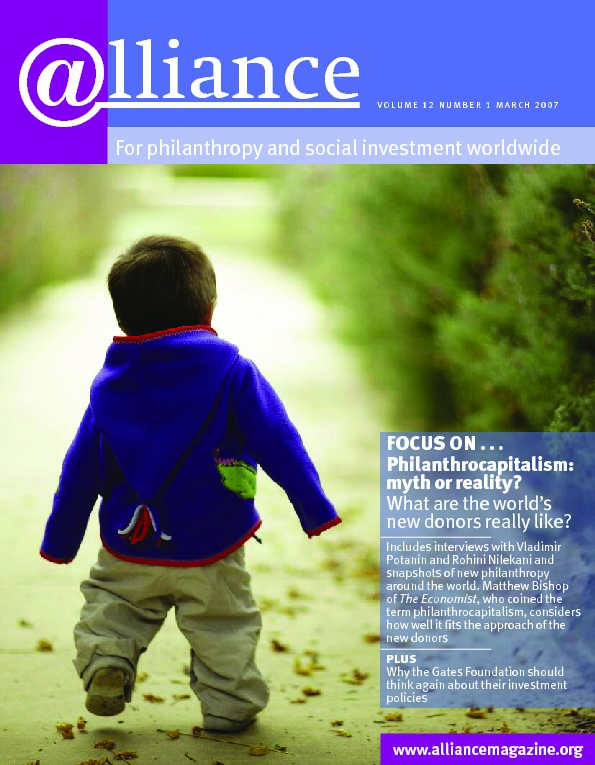In his opinion piece ‘Steering clear of the missionaries’ in the last issue of Alliance, Michael Brophy longs for a time when European foundations can look US philanthropy in the eye and say ‘we are your equals’. This is a surprising statement from one of the most distinguished ambassadors of European philanthropy, who, probably more than anyone else, deserves credit for promoting the work and experience of European foundations in the world.
Michael Brophy cites community foundations as evidence for the missionary impulse of US philanthropy. Here, I think, he picked the wrong example. For community foundations are a prime example of the growing internationalization of philanthropy. Although first invented in the US, they are no longer a uniquely American concept, but have developed into a truly international form of organized philanthropy. As the community foundation concept (I stopped using the term ‘model’ a long time ago) spread across Europe and around the world during the last decade, it was constantly adapted to different political and cultural environments.
Moreover, community foundations from different countries have begun to collaborate across national borders in order to share experience and expertise and to jointly develop new ideas, concepts and strategies.
And this international dialogue is no one-way street. Just one recent example: the report On the Brink of New Promise, written by Lucy Bernholz, Katherine Fulton and Gabriel Kasper, challenged US community foundations to focus less on asset development and more on community impact – a point which reassured European participants in the Transatlantic Community Foundation Network (TCFN) that they had something to offer to their American fellows, because community leadership is one of their particular strengths. Since they lack the financial resources that many US community foundations enjoy, they don’t measure their success by the size of their assets but by the societal change they help to facilitate in their communities.
To be fair, Michael Brophy is referring to the very beginnings of community foundations in the UK. But things have changed in the meantime. And the simple truth is that ‘the insensitive proselytizing of the community foundation pedagogues’ did not do any damage, and did not prevent the community foundation concept from being reinvented in various countries. Today, from Edinburgh to Bergamo, from Togliatti to Dublin, community foundations are seeking to improve the quality of life in their communities in creative ways never imagined by the custodians of the Holy Community Foundation Grail on the other side of the Atlantic. And while these young foundations remain aware of their many inherent weaknesses, they do not suffer from an inferiority complex regarding their American counterparts. The time of the missionaries is already over.
Peter Walkenhorst
Program Director, Community Foundations, Bertelsmann Stiftung



Comments (0)